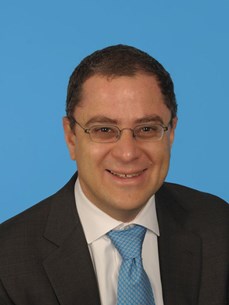Meeting
2014 Gastrointestinal Cancers Symposium

Memorial Sloan-Kettering Cancer Center, New York, NY
Ghassan K. Abou-Alfa , Jean-Frédéric Blanc , Steven Miles , Tom M. Ganten , Jorg Trojan , Jonathan S. Cebon , Andre K. D. Liem , Lara Rachel Lipton , Charu Gupta , Benjamin Wu , Jason B. Litten , Leonard Saltz
Background: Trebananib is a first-in-class antiangiogenic therapy that sequesters Ang1 and Ang 2, preventing their interaction with the Tie 2 receptor. A previous study of the combination of trebananib with sorafenib in renal cell carcinoma showed an acceptable toxicity profile. Elevated Ang 2 levels have been associated with a poor prognosis in HCC. We thus evaluated the safety and efficacy of trebananib plus sorafenib in HCC. Methods: Patients with HCC, ECOG ≤ 2, Childs-Pugh A, and adequate organ function received IV trebananib at 10mg/kg weekly (cohort 1) or 15 mg/kg weekly (cohort 2) plus sorafenib 400 mg PO twice daily. Thirty patients were accrued to each cohort to provide a power of 80% with the 1-sided exact test for single proportion at α = 0.20 to show a ≥ 78% PFS rate at 4 months relative to 62% reported in the sorafenib historical control. Secondary endpoints included safety and tolerability, progression free survival, objective response rate, disease control rate, time to progression, and overall survival. Results: See table. Conclusions: Trebananib at 10 mg/kg and 15 mg/kg plus sorafenib were well tolerated in patients with advanced HCC. When compared with historical controls, study results did not show an improvement in PFS rate at four months. Clinical trial information: NCT00872014.
| Demographics | Trebananib 10 mg/kg + sorafenib (n=30) |
Trebananib 15 mg/kg + sorafenib (n=30) |
|
|---|---|---|---|
| Males (%) | 77 | 90 | |
| Median age (years) | 64 | 60 | |
| Stage II/III/IV (%) | 7 / 43 / 50 | 7 / 50 / 43 | |
| ECOG 0-1 (%) | 97 | 93 | |
| Prior surgical therapy (%) | 13 | 7 | |
| Locoregional therapy (%) | 23 | 10 | |
| HBV/HCV (%) | 23 / 10 | 27 / 20 | |
| Disposition | |||
| Patients still on therapy (%) | 0 | 10 | |
| Median (range) duration of trebananib therapy (days) | 165 (8-740) | 106 (1-631) | |
| Median (range) duration of sorafenib therapy (days) | 110 (10-838) | 112 (4-636) | |
| Median dose of trebananib (relative dose intensity) | 10.2 mg/kg (99%) | 15.2 mg/kg (99%) | |
| Median dose of sorafenib (relative dose intensity) | 744 mg/kg (87%) | 781mg/kg (95%) | |
| Patient incidence (%) of grade 3/4 treatment-emergent adverse events in ≥10% of patients | |||
| Diarrhea | 20 | 17 | |
| Hypertension | 20 | 13 | |
| Ascites | 20 | 10 | |
| Palmar-plantar erythrodysesthesia syndrome | 17 | 13 | |
| Fatigue | 10 | 10 | |
| Dyspnea | 7 | 13 | |
| Hyperbilirubinemia | 7 | 10 | |
| Outcomes | |||
| PFS at 4 months (%) | 57 | 54 | |
| Confirmed objective response/durable SD (%) | 3 / 7 | 7 / 40 | |
| Median OS (months) | 17 | 11 | |
| Median TTP (months) | 9 | 7 | |
Disclaimer
This material on this page is ©2024 American Society of Clinical Oncology, all rights reserved. Licensing available upon request. For more information, please contact licensing@asco.org
2014 Gastrointestinal Cancers Symposium
Poster Session
General Poster Session B: Cancers of the Pancreas, Small Bowel, and Hepatobiliary Tract
Cancers of the Pancreas, Small Bowel, and Hepatobiliary Tract
Multidisciplinary Treatment
NCT00872014
J Clin Oncol 32, 2014 (suppl 3; abstr 286)
10.1200/jco.2014.32.3_suppl.286
286
C1
Abstract Disclosures
2023 ASCO Annual Meeting
First Author: Shukui Qin
2024 ASCO Gastrointestinal Cancers Symposium
First Author: Timothy J. Brown
2022 ASCO Annual Meeting
First Author: Arndt Vogel
2023 ASCO Annual Meeting
First Author: Ming Liu